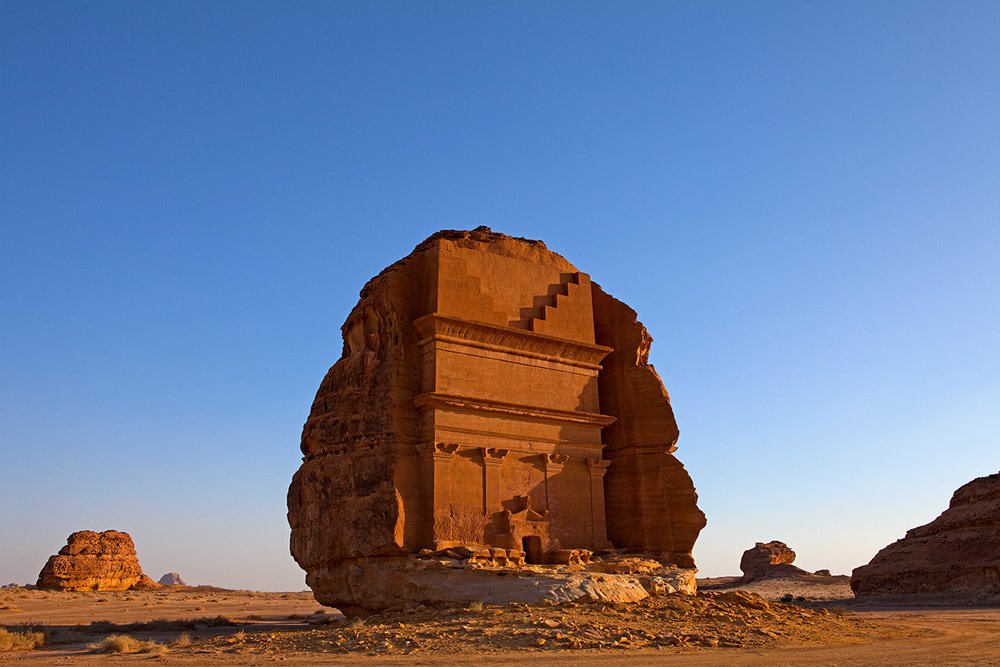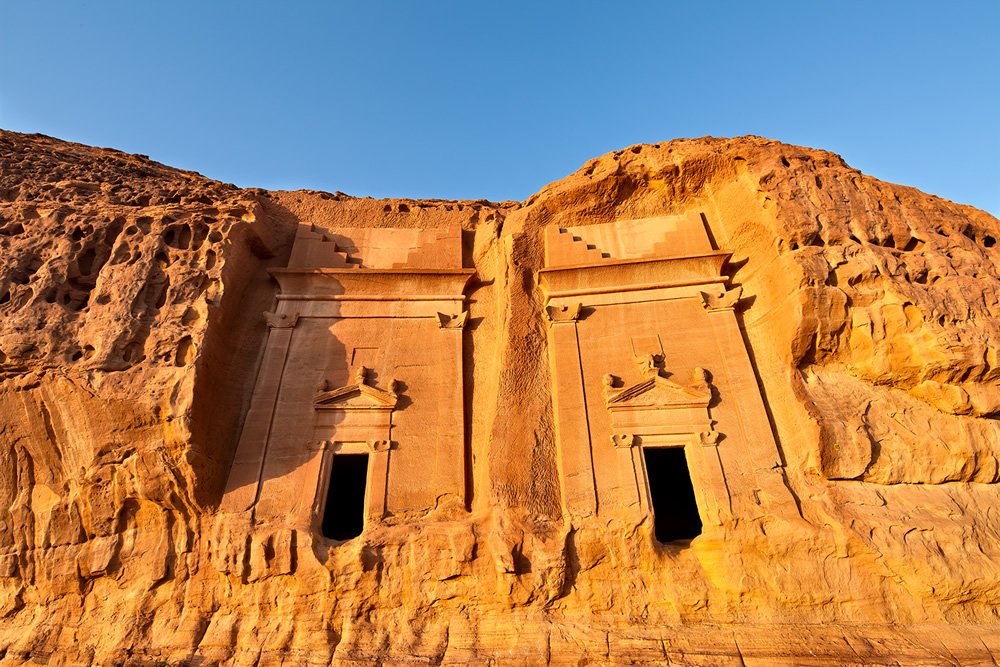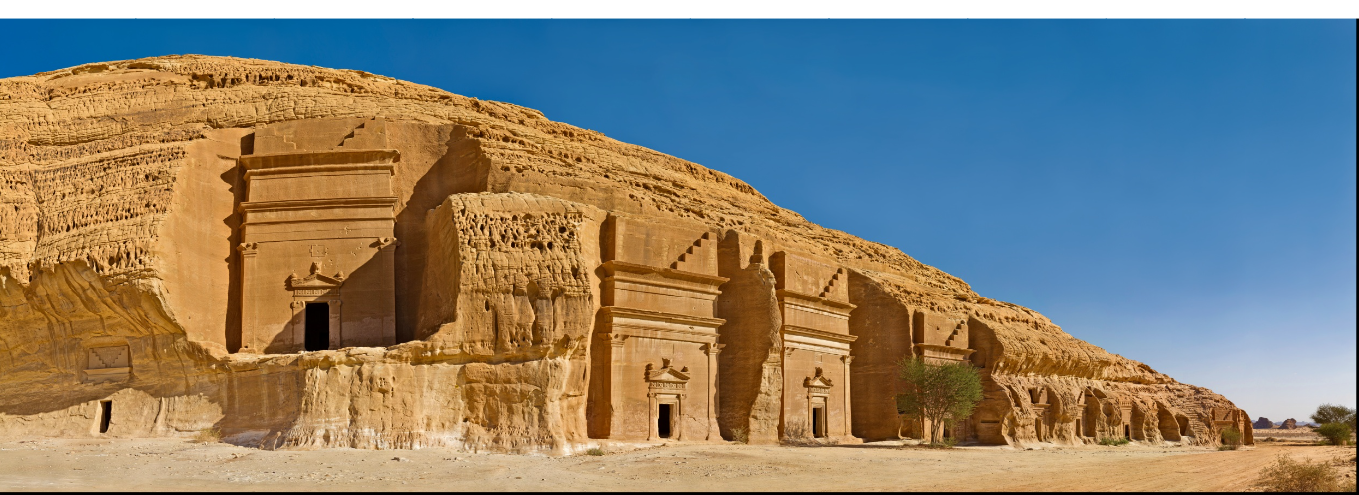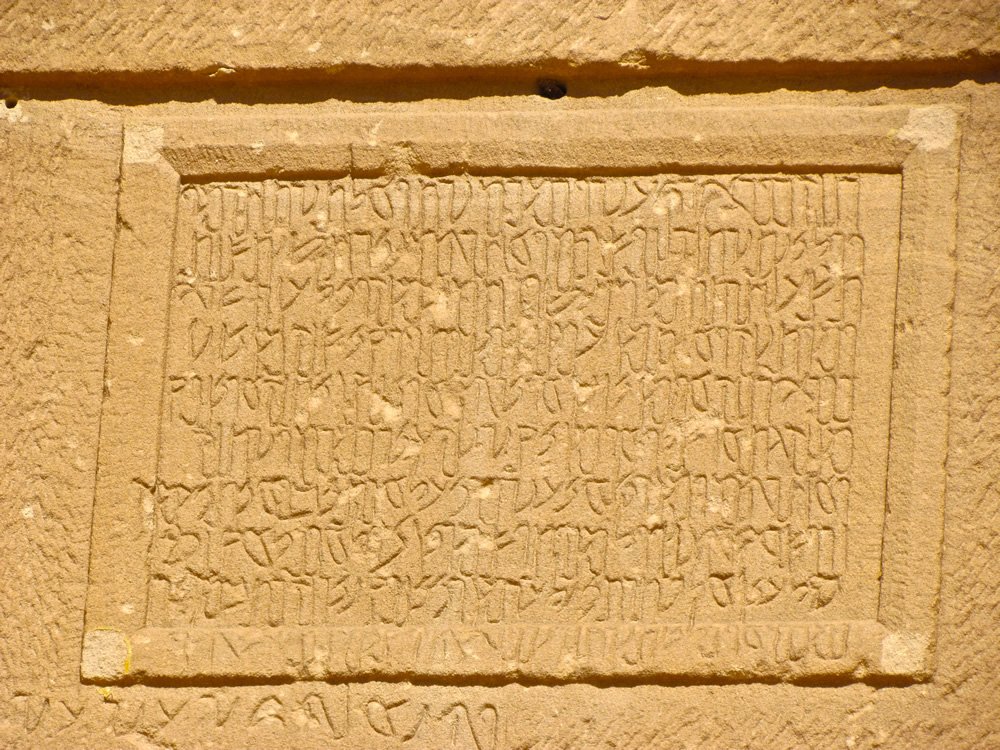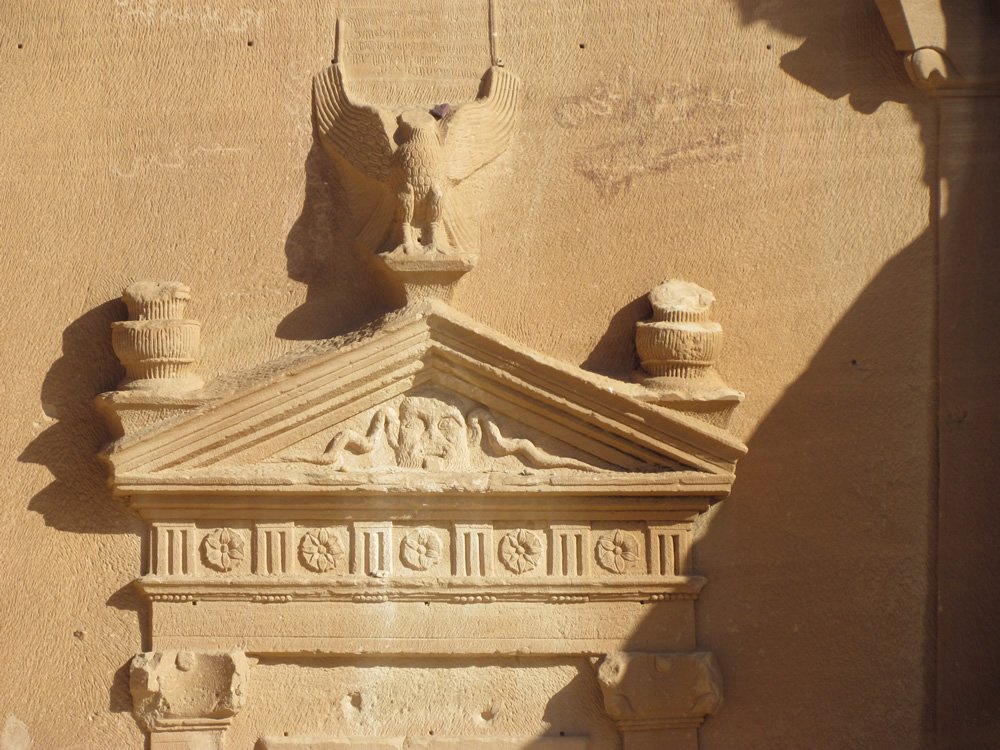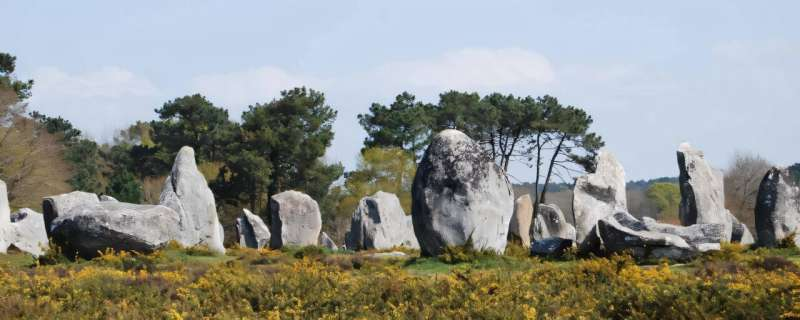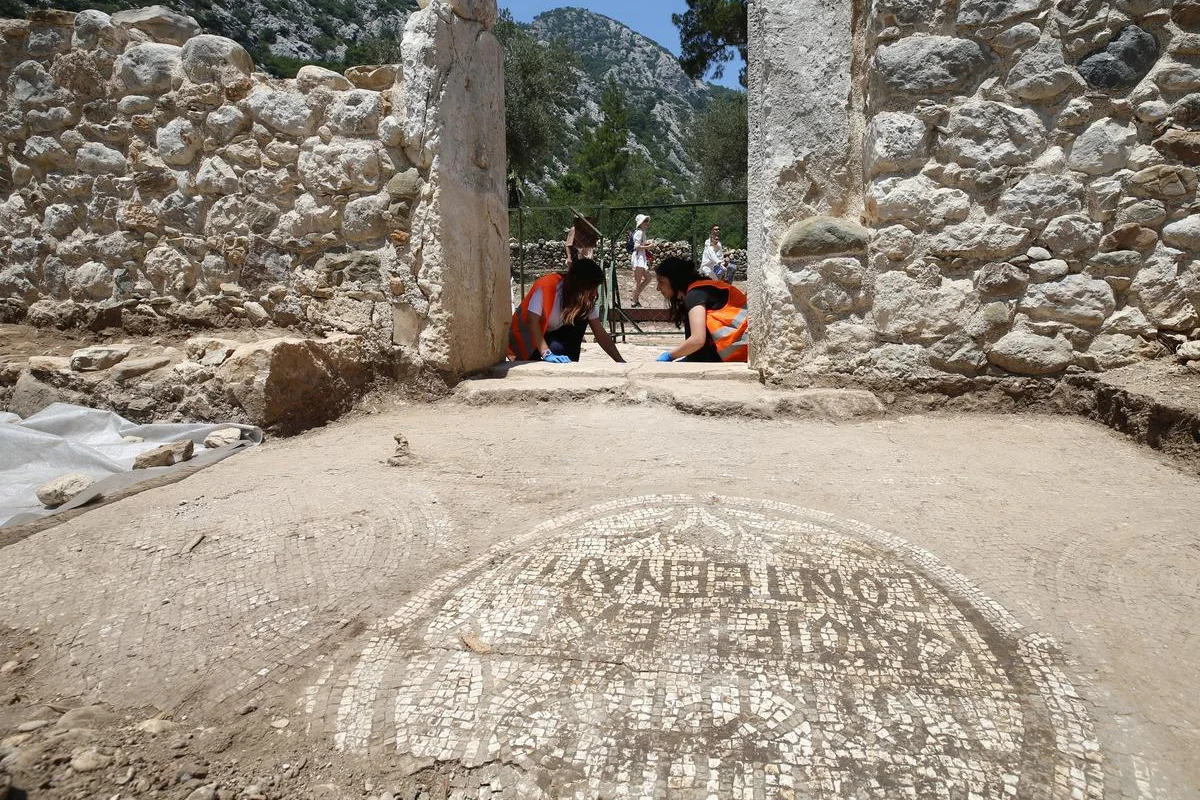Mada’in Saleh, not far from al-Ula (22 km), was known as al-Hijr, or Hegra, by the Nabataean people who carved its magnificent tombs into the golden Quweira sandstone outcrops. The delicate details on the entrance portals and the smooth surfaces of its 111 tomb façades reflect the great skills of the masons of their time. The splendor of the natural setting here must have reminded the Nabataeans of their capital, Petra, hewn into the rosey sandstone cliffs to the north in modern-day Jordan. It is no wonder that they chose this very spot to build their second city, Hegra. Based on the many dated tomb inscriptions, Hegra thrived between 1 BCE -74 CE.
Qasr al-Farid, an unfinished tomb that stands alone.
The Nabataeans began as pastoral nomads, raising their sheep, goats, and camels in the desert as so many other Arabian tribes have done through the millennia. They also practiced oasis agriculture, utilizing a set of wells dug into the rock. Their origin is uncertain, but there is a strong possibility that they came from the Hejaz region of northwest Saudi Arabia. The deities they worshipped were similar to those honored by ancient cultures in that area and the root consonants of their name – n, b, t, w – occur in the early Semitic of the Hejaz. From early in their history, they had connections with Mesopotamia and may have been the Nabatu Arabs mentioned by the Assyrians in the eighth century BCE. Alexander the Great’s officer Hieronymus of Cardia wrote of the Nabataeans as having an ascetic life with harsh laws. They were also known for their incredible familiarity with the desert and their ability to fade into it to evade enemy tribes. Their system of hidden cisterns dug deep in the interior provided water for their livestock and their people.
Area C
The real cause of the success of the Nabataeans, however, was control over much of the spice trade. Frankincense, myrrh, and other spices from southern Arabia were brought up to the north along trade routes to be purchased by the Greeks, Romans Egyptians, Phoenicians, and others around the Mediterranean and in the Near East. The Nabataeans built their empire as the middlemen. Hegra was a crossroads where the major north-south incense route intersected a road from the Red Sea to the Persian Gulf.
Before the Nabataeans chose Hegra as their most southerly outpost for caravans on the spice route, the settlement was occupied by their predecessors in the trade, the Dedanites and then the Lihyanites. The Qur’an refers to a Thamudic settlement even earlier. The Romans annexed the area controlled by the Nabataeans and incorporated it into its Arabian province in 106 CE.
Qasr al Bint, “Palace of the Daughter or Maiden,” is the largest tomb façade at Mada’in Saleh, with a height of 16 m. It lends its name to the group of adjacent tombs. The portal is raised above ground. Above the doorway an inscription plaque indicates that it dates to circa 31 CE.
The ruins of the town of Hegra lie on the plain some distance from their tombs. The buildings, still for the most part unexcavated, were made of unimpressive sun-dried mudbrick. What is known about Hegra comes primarily from the tombs, the many inscriptions carved into their façades, and references found elsewhere.
The tomb façades are finely carved and fairly uniform in their style. At the top of most is a pair of crowsteps rising up from a central point. One or two cornices are just below, resting on the delicate capitals of two pilasters. A portal in the center of the façade provides the entrance to the tomb. Inside are recesses carved into the walls where the bodies of the deceased were placed. The interiors remain roughly chiseled in stark contrast to the smoothly finished façades.
Nabatean Inscription
Qasr al Bint, “Palace of the Daughter or Maiden,” is the largest tomb façade at Hegra, with a height of 16 m. It lends its name to a group of adjacent tombs. The portal is raised above ground. Above the doorway is an inscription plaque saying that the tomb was carved by the sculptor Hoor ibn Ahi for Hani ibn Tafsy, his family and descendents, in the 40th year of the reign of the Nabataean King Aretas IV (al-Haritha), dating it to circa 31 CE.
The most photogenic and most iconic symbol of Mada’in Saleh is Qasr al-Farid, a single tomb carved into a small dome that stands alone in the open. The façade was never finished, so the heavily chiseled surface of the lower third documents how the tombs were fashioned from the top down.
Pediment above tomb portal. The eagle above the portal is thought to represent the primary Nabataean deity Dúshara, “Lord of the Mountain.” The face with snakes coming out of the sides like Medusa shows Greek influence. On either side are two urns and below is a row of rosettes.
The Jebel Ithlib is a monumental outcrop topped with a complex of spires in the northeastern part of the site. In the middle is a natural slit that measures 40 m (131 feet), called the Siq, after a similar corridor at Petra. At its entrance, to the right is a square chamber containing three stone benches that served as a triclinium for sacred feasts. Today, the chamber is known as al-Diwan (court). Its large entrance suggests that the feasts extended into the open space before it.
By walking through the Siq, one enters a larger, natural alcove known as the Jebel Ithlib sanctuary where a canal channeled water into a cistern. Its enormous cliff faces have small sacred niches and altars carved into their otherwise unhewn surfaces. Jebel Ithlib was thought to have been a holy place to worship the Nabataean deity Dúshara, “Lord of the Mountain”.
Mada’in Saleh has been s a UNESCO World Heritage Site since 2008.


